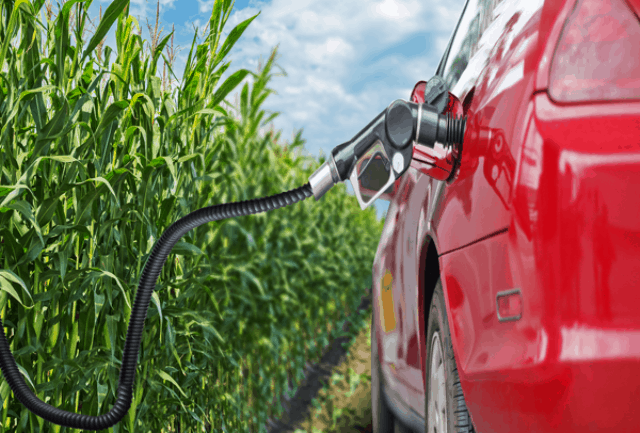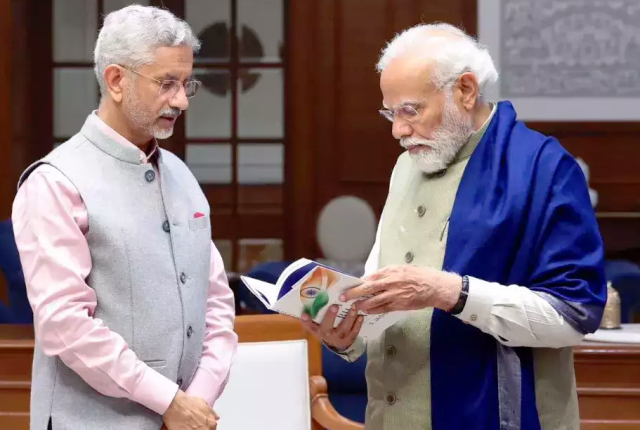
Modi-Yogi Doublespeak On Renewable Energy
‘If wishes were horses, beggars would ride’ is an old Scottish proverb dating back to the 17th century which looks to have gone down well with our Prime Minister Narendra Modi. Achievable or not, Modi keeps on making promises not necessarily supported by ground reality. But he has the advantage of people trusting him. Modi won many hearts, specially of the environmentalists, when at the recent United Nations climate action summit in New York he announced India ambitiously resetting the renewable energy (RE) target at 450 gigawatt even while the country is losing steam in its march towards the 2022 RE capacity goal of 175 GW.
A combination of factors, including policy deficit, state governments insisting on low tariffs for electricity derived from renewable sources and they not always honouring power purchase agreements (PPAs) or revising PPAs arbitrarily marks the Indian RE power scene. No wonder then solar power capacity addition here last year was down to 6.5 GW from 9.4 GW in 2017-18 and in the first quarter of 2019-20, it was a disappointing 1.4 GW.
US President Donald Trump had reasons to demur when Modi said that the world was not doing enough to overcome the challenge of climate change. Therefore, he bravely announced at the summit that “India is here not just to talk about the seriousness of this issue, but to present a practical approach and a road map. We believe an ounce of practice is worth more than a tonne of preaching.” But back home, Modi has to contend with the fact that India is a Republic where the states have full powers on many subjects, including agriculture and there is also a concurrent list, leaving room for serious disagreements on issues.
Apparently, it should work to the advantage of Modi that the Hindu nationalist Bharatiya Janata Party as it has a formidable majority at the centre, it runs the government in 21 states either on its own or in partnership with other parties. Uttar Pradesh happens to be India’s largest state, which, according to Modi himself, suffers from development indicators of sub-Saharan Africa than anywhere else in Asia. UP remains among the least preferred investment destinations because of poor law and order situation, religious strife, governance deficit and power shortages. The UP scene has not improved at all in the last couple of years though BJP has 312 of 403 Assembly seats.
BJP being in absolute power both at the Centre and in Lucknow, it should be a given that the latter will faithfully dispose what the prime minister may be proposing. Unfortunately, this is not happening in the case of promotion of green energy. Considering the fact that the state happens to be the country’s largest producer of sugarcane and sugar, it has the potential to produce more green energy in the form of ethanol for blending with petrol and also produce clean electricity by burning bagasse. Om Prakash Dhanuka, a former president of Indian Sugar Mills Association, says: “The sugar industry presents the unique example of converting by-products of sugarcane, namely, molasses and bagasse into wealth in the form of renewable green energy. The carbon footprint of ethanol and bagasse fired electricity is considerably less than energy derived from fossil fuels such as crude oil and coal. Moreover, the higher the supply of renewable green energy, more will the country save on cost of imports of oil and coal.”
Even while India has estimated geological coal resources of 319.02bn tonnes and its 2018-19 production was 731m tonnes, up 8.1 per cent from 675.40m tonnes in 2017-18, India still had to import as much as 236m tonnes last year against 209m tonnes in the previous year. Perhaps more worrisome is the country’s oil import dependence going up from 80.6 per cent in 2015-16 to 83.7 per cent in 2018-19 with oil consumption during this period growing from 184.7m tonnes to 211.6m tonnes. The country’s oil import bill ominously rose from ₹171,702 crore in 2005-06 to ₹881,282 crore in 2018-19. “We need to give a push to rapid development of green energy capacity by making optimal use of sustainable resources such as sunlight abundantly available in most parts of the country, wind and biomass in the context of the Organisation of Petroleum Exporting Countries (OPEC) forecast that India would record the fastest annual average oil demand growth in the world at 3.7 per cent through 2040. We also have reasons to be greatly concerned about our hosting 14 of the world’s 20 most polluted cities,” says Dhanuka. Rapid growth in oil demand has to be seen against the background of the country declaring an ambition to become a $5 trillion economy in the next five to six years from the present $2.8 trillion.
The compulsion to have cleaner air in our cities and also to relieve the pressure that oil imports leave on our balance of payments, New Delhi has recently given some major incentives to sugar mills for stepping up production of ethanol, which should progressively raise the rate of its blending with petrol. Traditionally, here ethanol is made from what is called C heavy molasses, that is, after most juice is extracted from cane for sugar making. Going a step forward and in order also to counter the sugar industry’ viability being compromised under the weight of overproduction of the sweetener for two seasons in a row, New Delhi last year wisely allowed the industry to use B heavy molasses, which retains a good amount of juice. Going even a step forward, the government has cleared cane crushing factories to produce ethanol directly from cane juice. Prices for ethanol to be made from all three categories have been revised upwards to the industry’s satisfaction. A major relief came its way with goods & services tax reset at 5 per cent from the earlier 18 per cent.
But the Yogi Adityanath administration in disregard to what the centre is trying to do has given an order that sugar mills in UP will have to reserve 16 per cent of their C heavy molasses for units engaged in making country made liquor (CML) against 12.5 per cent earlier. The state government excuse for the unjustified move is since molasses production in the 2018-19 sugar season (October to September) is down to 4.7m tonnes from 5.5m tonnes expected earlier, CML producers in the state need to be compensated by raising the percentage of their molasses entitlement. While sugar factories will be parting with the 16 per cent quota of C heavy molasses at ₹75 a quintal, if they are to buy it from the market the cost will be anything between ₹450 and ₹500 a quintal. CML and India made foreign liquor (IMFL) happen to be the two most important sources of excise revenue for the state. It is precisely for the sake of revenue that the interest of the sugar industry has been sacrificed.
Then again the arbitrary decision by the UP Electricity Regulatory Commission that henceforward sugar factories will get ₹2.89 a unit against the earlier ₹4.88 a unit for their cogenerated electricity derived by way of burning bagasse has come as a disincentive for sugar factories on green energy mission. The Commission has arrived at the lower electricity rate by assuming without any justification the cost of bagasse at ₹1,000 a tonne from the earlier ₹1,600 a tonne. The current UP market rate for bagasse is, however, ₹1,800 a tonne. The two instances show beyond doubt that the UP government is working at cross purposes with the centre’s policy to promote non-fossil fuels based energy.



